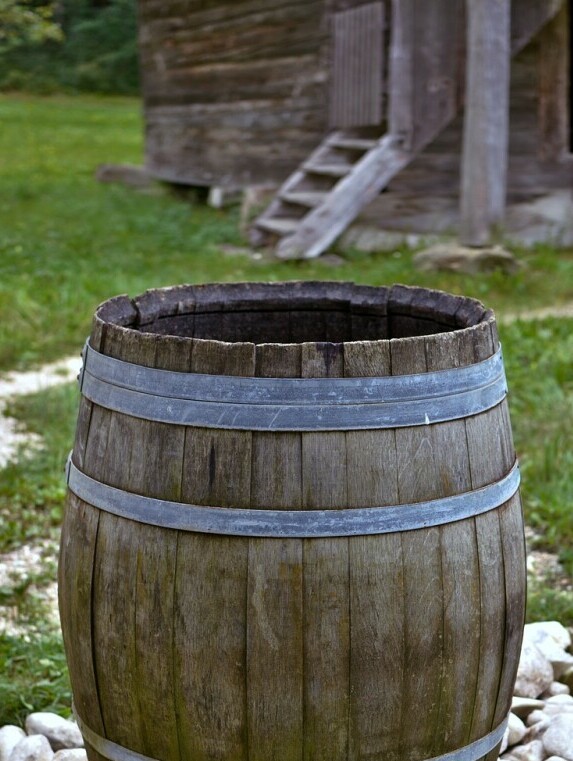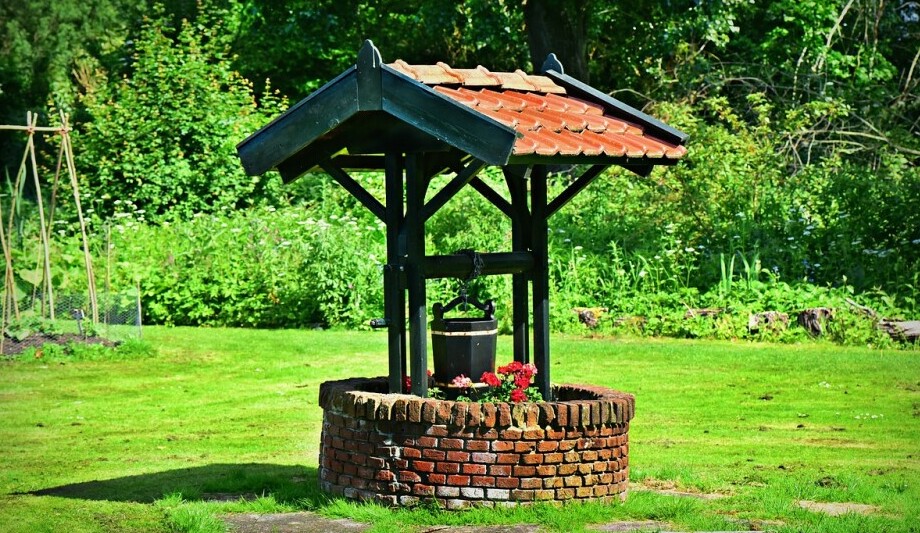Affiliate Disclosure: I earn commissions if you shop through the links below at no additional cost to you.
Last Updated on June 26, 2024 by Jeremy
I’m going to kick things off by diving straight into the essentials of off-grid living, and you guessed it – water tops the list. Living off-grid is increasingly popular among those looking to reduce their carbon footprint, value independence, or simply embrace a new lifestyle closer to nature. But stepping away from municipal water systems means you’ve got to get savvy about sourcing your own H2O.
In my opinion, before you pack up for the wilderness or plot out your space in rural tranquility, you need a solid plan for water. We’re not just talking drinking water; you’re going to find out about how much you need for food production, personal hygiene, and possibly livestock. I’m here to help you explore ways to meet those needs without compromising on health or sustainability.

You might bump into a few challenges while trying to secure a reliable water source off-grid. These can range from the physical landscape of your chosen spot to the legal tape surrounding water rights. Don’t worry too much about this right now. Every problem has a solution, and I’m going to walk you through them like a trusty guide by your side.
Now, transitioning seamlessly into the next part of our water solution expedition, keep rainwater in mind. It’s free, relatively easy to harvest, and guess what? It’s a great starting point for many off-grid dwellers. In the following section, we’re going to get into the nuts and bolts of collecting and storing one of nature’s most vital gifts – rain.
Collecting and Storing Rainwater: Harnessing Nature’s Bounty

I’m going to let you in on a secret that’s been around since ancient times – collecting rainwater. You see, rain is nature’s gift, and for those embracing off-grid life, it’s a source of pure, accessible water. But tapping into this bounty isn’t just a matter of setting out barrels during a downpour. There’s a science to it, and I’m here to guide you through.
So why collect rainwater? First off, it’s low-hanging fruit for water independence. With the right setup, rain can cover your household needs, irrigation, and even livestock. Plus, it’s a sustainable choice that doesn’t draw from dwindling groundwater supplies. But remember, your specific catchment strategy will hinge on the region’s rainfall patterns and the scale of your water requirements.
Now, when it comes to collecting this liquid asset, there are options. From simple barrel systems placed under downspouts to expansive catchment areas feeding large storage tanks, the design of your rainwater harvesting system can be tailored to your needs. Some folks opt for rooftop collection, while others might use ground-level catchments. Whichever you choose, ensure that the materials are non-toxic and the structure is built to filter out debris.
Check out this 7-minute rain harvesting video where it’s collected from your roof:
Storing your water safely is crucial, too. You’ll want containers that block sunlight to prevent algae growth. They should be made from durable, food-grade material and have a secure lid to keep out critters. And let’s not forget about overflow outlets and first-flush systems – these keep your stored water pristine.
I’ve got to mention, though, that capturing rainwater isn’t a free-for-all. Many places have regulations about harvest and use, so check your local laws. Sometimes, it might require permits or conform to certain standards. Don’t let this discourage you, though; most of these laws aim to ensure safety and sustainability for everyone.
Digging Deeper: Unearth the Potentials of Well Water
Now, if the idea of catching rain is appealing, imagine tapping into a constant supply beneath your feet. That’s where wells come into play in off-grid living. Securing water from below ground can be a game-changer if you’re located in an area with a reliable aquifer.

Digging a well isn’t just about putting a hole in the ground. You have to understand your local water table, geological layers, and sustainability of the aquifer. This requires a professional assessment, so it’s not the most DIY-friendly option, but the payoff can be significant.
When you strike water, the next step is ensuring it’s safe to drink. Everyone likes to think that well water is pure, but that’s not a given. Testing for contaminants such as heavy metals, bacteria, and chemical runoff is essential, and depending on what you find, you might need to treat your water.
Maintenance is key with well systems. Regular checks are crucial to prevent system failures that could leave you high and dry. And while a well can offer a long-term solution, it’s worth noting the upfront costs and the need to balance your water consumption with the aquifer’s recharge rate.
Experts who understand the intricate details of aquifers and well systems can help you determine if drilling a well is the right move. They’ll look at the long-term viability and help you weigh the benefits against the potential risks. They aim to ensure that your well leaves a minimal footprint on the environment while meeting your needs.
But let’s look beyond the well itself. Water is a resource but also a source of power. That’s going to include exploring unconventional methods like Micro-Hydro systems which transform the kinetic energy of flowing water into electricity. It’s like having a miniature power station, with the byproduct being the water you can use for your daily needs. In the next section, we’ll delve into the specifics of how Micro-Hydro power can be integrated into your off-grid water solution arsenal.
Micro-Hydro Power: An Untapped Resource for Sustainable Water Solutions
Now, let’s talk about a hidden gem in the world of off-grid water solutions: micro-hydro power. This isn’t just about generating electricity; it’s also about utilizing a constant water flow for your off-grid needs. Micro-hydro systems are designed to harness the energy of flowing water from a stream or river to produce a reliable and continuous supply of electricity.

How exactly does a micro-hydro system work? It starts with the movement of water. Ideally, you’ll want a strong flow and a decent elevation drop on your property to maximize energy production. Water is diverted into a channel or pipe, leading to a turbine. The flowing water turns the turbine, which in turn, spins a generator to produce electricity. This energy can then be used directly or stored in batteries for later use.
I’d like to draw your attention to a great resource: https://www.microhydropower.com/. This website is a treasure trove of information, offering insights into the ins and outs of micro-hydro installations. From detailed guides to real-life success stories, it provides a solid foundation for anyone considering this water solution.
Yes, embracing micro-hydro does come with its challenges. You’re going to find out about the need for regular maintenance, keeping debris away from your intake, and managing varying water flow throughout the seasons. However, those who’ve successfully implemented micro-hydro systems often swear by its low impact and efficient power generation capacity—just take a glance at those case studies on microhydropower.com.
As we consider transitioning to water safety and cleanliness in the next section, remember that micro-hydro systems can play a significant role. The same flowing water that generates your power can also be utilized for your other water needs, provided it’s clean and safe for use. So, don’t worry too much about whether you can have your cake and eat it too—micro-hydro power demonstrates that sometimes, you can indeed have both reliable energy and water resources off the grid.
Purifying Your Findings: Ensuring Water Safety and Cleanliness
Imagine you’ve just collected a fresh batch of rainwater, or you’ve established a steady flow from your micro-hydro system. While it’s a significant milestone in off-grid living, your work isn’t quite finished. Ensuring the water you consume is safe and clean is the next vital step.
Not all water is created equal, especially not when it’s sourced from the environment. The water may contain microorganisms, chemicals, or particulates that could pose health risks. That’s where purification comes into play. It’s not just about clarity; it’s about safety.

Natural purification methods, like using sand or charcoal filters, can be quite effective. Do-it-yourself (DIY) enthusiasts might find making their own bio-sand filters an interesting project that blends sustainability with practical skills.
But sometimes, nature needs a little help from technology. Modern water purifiers and filters, specifically designed for off-grid use, can remove the smallest of pathogens and pollutants from water. Options vary from ultraviolet light purifiers to ceramic filters and each has its pros and cons depending on the situation at hand.
Don’t underestimate the importance of regular water testing. It’s the only foolproof way to know what’s in your water and if it’s safe to drink. Test for common contaminants like bacteria, nitrates, and heavy metals, and do so periodically – water quality can change with seasons and environmental factors.
Ensuring access to clean, potable water isn’t just a personal achievement; it’s a cornerstone of sustainable, off-grid living. By taking the right steps toward water purification and quality assurance, you’re setting up not only a self-sufficient home but also a responsible and health-conscious lifestyle.
Building a Water-Wise Off-Grid Community
I’m going to wrap up our discussion with a truth that’s as clear as well-purified off-grid water: sustainable living isn’t just a personal journey, it’s a communal effort. When you choose an off-grid lifestyle, you become a pivotal part of a larger ecosystem – one that thrives on cooperation and shared values.
Investing in community-driven water solutions is more than just sharing a resource; it’s about establishing a network of resilience and support. By engaging with your neighbors to create collective systems for water collection, purification, and distribution, you’re not just preparing for your own needs but also fortifying the entire community against common challenges.

Let’s not forget the power of education in this equation. Sharing knowledge on water conservation techniques, purification methods, and system maintenance can empower your community to operate more sustainably. Workshops, local meetings, and online forums are great starting points to foster this cycle of learning and improvement.
Finances, of course, play a big role, too. Community investment can drastically reduce individual burdens when it comes to implementing and maintaining water solutions. Together, you can fund larger projects, share maintenance costs, and ensure that everyone has access to clean water, regardless of personal economic standing.
As we conclude, remember that sustainable off-grid living is about adaptability and proactive engagement. By choosing to collaborate on water solutions, you’re not only enriching your own off-grid experience but also contributing to the integrity and sustainability of your community. And that, in my opinion, is the true essence of living off the grid.
Care to leave me a comment on this article? I’d love to hear your feedback!
Cheers!




.jpg/:/cr=t:5.56%25,l:0%25,w:100%25,h:88.89%25/rs=w:1240,h:620,cg:true)



Leave a Reply